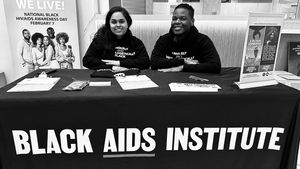From bathroom battles to homecoming victories, the fight for transgender inclusion in schools and colleges has had its ups and downs over the past few years. Many administrators are scrambling to make their schools more trans-inclusive as trans and gender-nonconforming youth are becoming more vocal about their needs. Those needs, however, encompass structural changes as well as progress in terms of the social aspects of education.
When I began my transition in college, each day was a struggle. I remember the fear of having a teacher who wouldn’t respect the name I had asked to be called and my preferred pronouns. Each time the names were called off the roster, I would sweat bullets, and I would often shy away from speaking in class. Luckily, many schools are increasing their awareness of trans issues and being more flexible on how students are addressed. However, there’s still a great deal of work left to make educational atmospheres trans-friendly.
Here are 11 ways schools can be more trans-inclusive and provide an environment that is affirming of their gender-variant students.
1. Allowing chosen names and pronouns to be used with ease and holding peers, educators, and staff accountable to using them.
One of the most fundamental ways to be respectful of a trans student is to allow them the ability to self-define. Often younger people lack the resources and access to make legal name and gender changes, but many do have an idea of what works for them. Using birth names or pronouns that students don’t identify with can leave them feeling invisible and zap their energy or willingness to participate in class. On the first day of classes, it’s important to ask all students if they have a preferred name and gender pronoun.
2. Installing gender-neutral bathrooms and locker rooms (or at the very least, alternatives to the typical gendered options).
Many see this as an extreme measure that endangers cis students, but often trans students are targeted and harassed in typically gendered restrooms.
3. Providing adequate gender-neutral housing options.
Colleges have traditionally separated students based on sex, but this is a glaring problem. Students should never be forced to share spaces with other students who may not be affirming, and it can be damaging for a trans student to be housed with someone based on their assigned sex at birth. With more freedom in choosing their roommates, students can have a say in creating a comfortable environment.
4. Supporting student groups and organizations that affirm gender-nonconforming and trans students with support and resources.
On the books, many schools have LGBTQ student groups, but in many cases they lack adequate resources. It’s important for administration, staff, and peers to be aware of and in touch with these groups because often their members are the students most in need of support and access to opportunities.
5. Respecting trans and gender-nonconforming staff and educators by allowing them to be their full selves.
When administration, staff, and educators are open and comfortable in their skin, students will be too. Also, educators will be better able to act as mentors and enrich their classrooms when they don’t have to worry about hiding some of the most important aspects of their lives.
6. Constructing a zero-tolerance nondiscrimination and harassment policy on bullying based on gender identity with actual consequences.
When trans and gender-nonconforming students are harassed or experience discrimination, a good school will have a solid policy in place for handling these infractions. And though sometimes little can be done once a troubling situation occurs, the way a school handles the aftermath can make or break a student.
7. Making sure curriculums acknowledge gender nonconformity, gender variance, and the gender spectrum.
The mainstream education models often ignore many of the major changes that we have made in society for marginalized groups. Many curriculums continue to focus on the white, cis, heterosexual male perspective, forgetting that there is so much diversity sitting right in front of the teachers. Educators should make a point of acknowledging that diversity and be aware of the possibility of having gender-variant student in their classes.
8. Providing resources for students who may be homeless or lack acceptance at home.
Coming out as trans or even finding support can be difficult, particularly in the context of family. Having people on staff who are affirming and deeply understand trans issues and gender nonconformity will go a long way in providing a safe haven for mistreated students.
9. Providing access to mental health resources, including counselors and/or therapists who are well-versed in working with trans clients.
Along with affirming staff members, there should be easy access to mental health resources for trans and gender-nonconforming students to allow them to share their potential issues.
10. Holding mandatory trainings for teachers, staff, faculty, and administration that include input from trans and/or gender-variant people.
Just because your training vaguely discusses trans and gender-nonconforming people, that doesn’t mean you’re actually making the cut. If your training doesn’t have any input from actual trans people on the planning and/or execution level, there may be some problems.
11. All policies (including dress codes) should truly push for uniformity and not make unnecessary stipulations based on gender identity, gender expression, or sex.
The most important thing to remember is that everyone wants to be respected equally. The only way to do that is to make sure that all students, staff, and more are allowed the same access, opportunities, and ability to express themselves.
These are just a few ways schools and be more inclusive. If you have any additions or suggestions, please comment below.



















































 From left: Jena Malone, Jodie Foster, Jay-Z, and Kendall and Kylie Jenner.Featureflash photo Agency/Shutterstock; Tinseltown/Shutterstock; Tinseltown/Shutterstock; Taylor Hill/FilmMagic
From left: Jena Malone, Jodie Foster, Jay-Z, and Kendall and Kylie Jenner.Featureflash photo Agency/Shutterstock; Tinseltown/Shutterstock; Tinseltown/Shutterstock; Taylor Hill/FilmMagic


















 Kirkam/Shutterstock
Kirkam/Shutterstock











